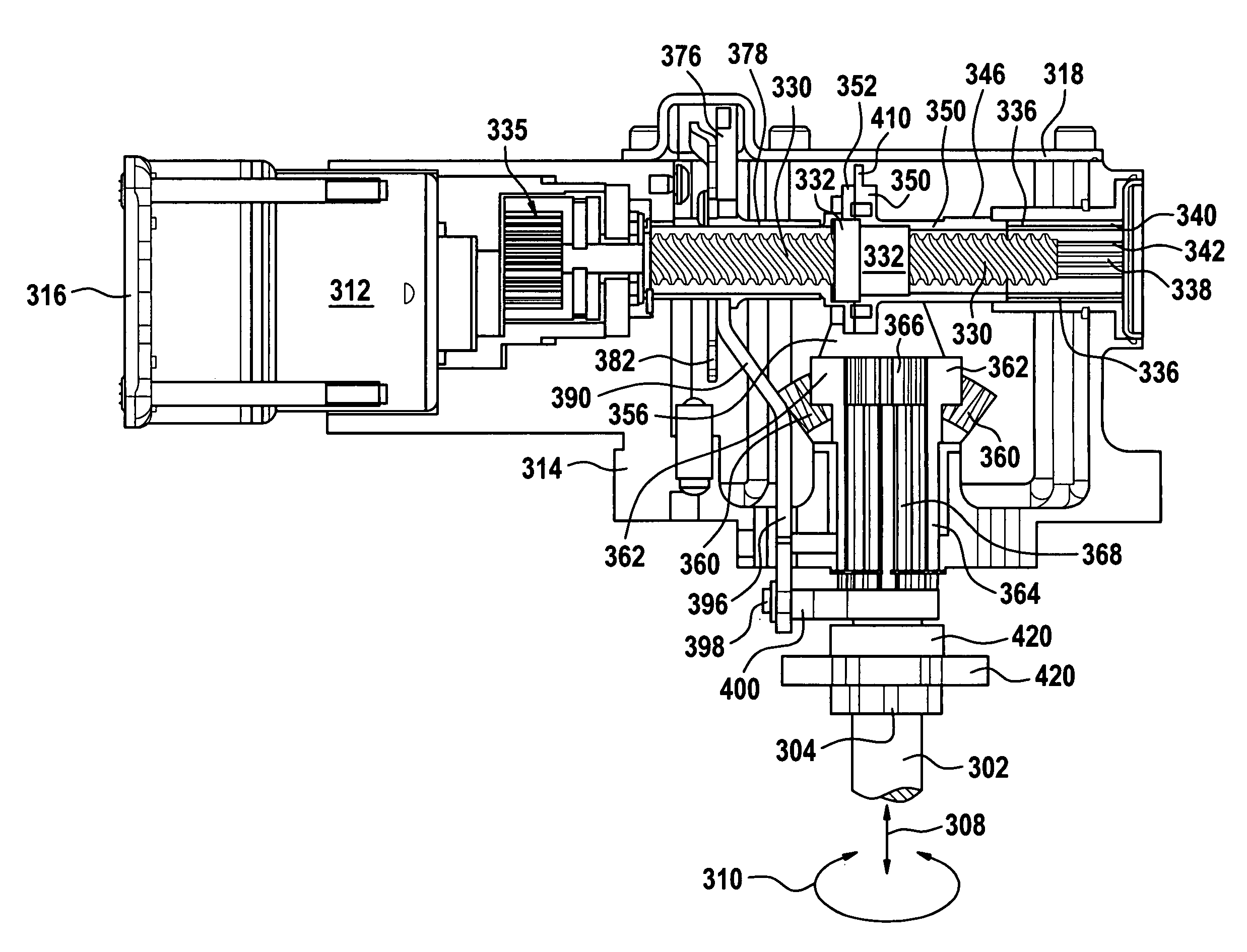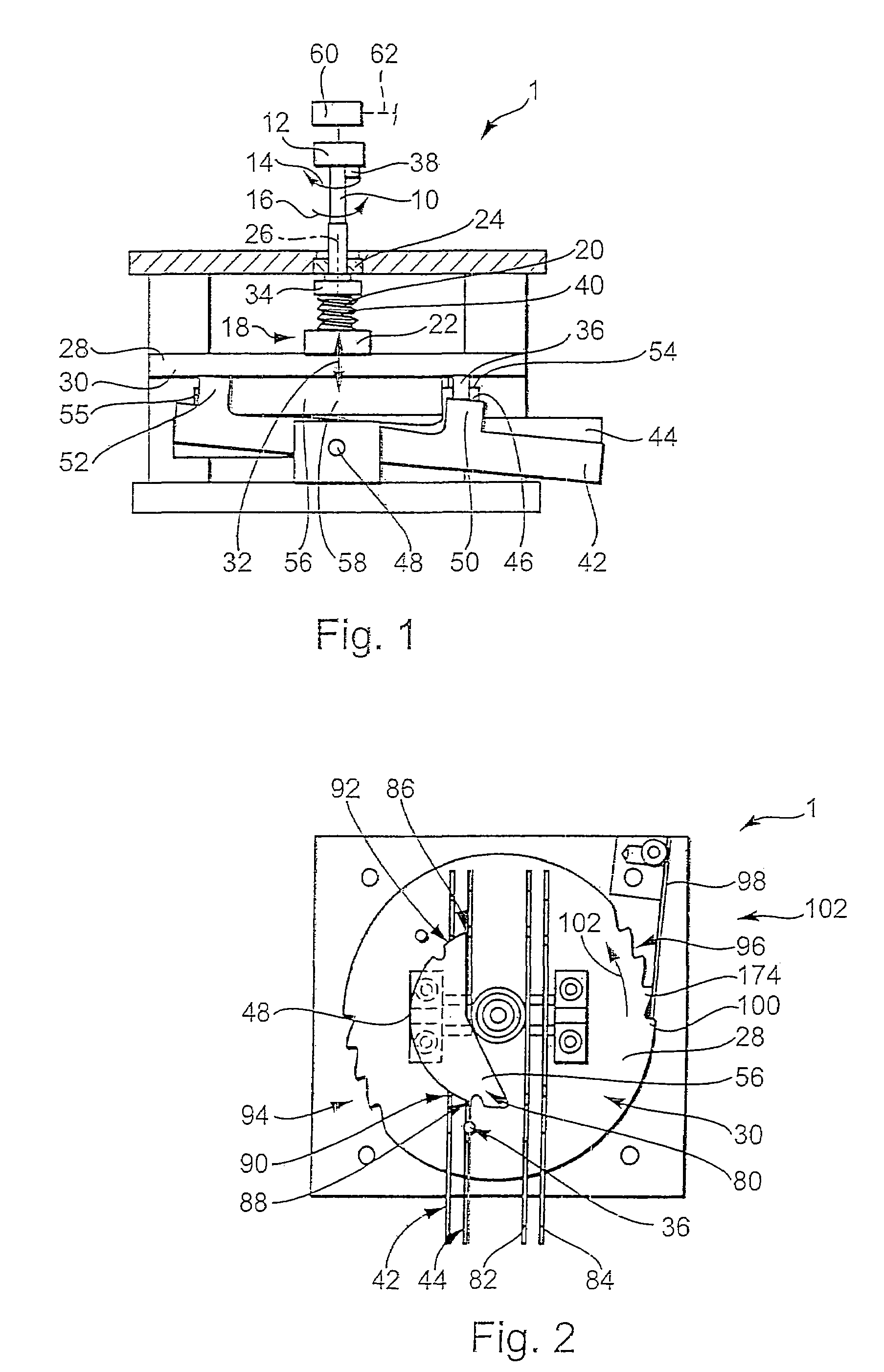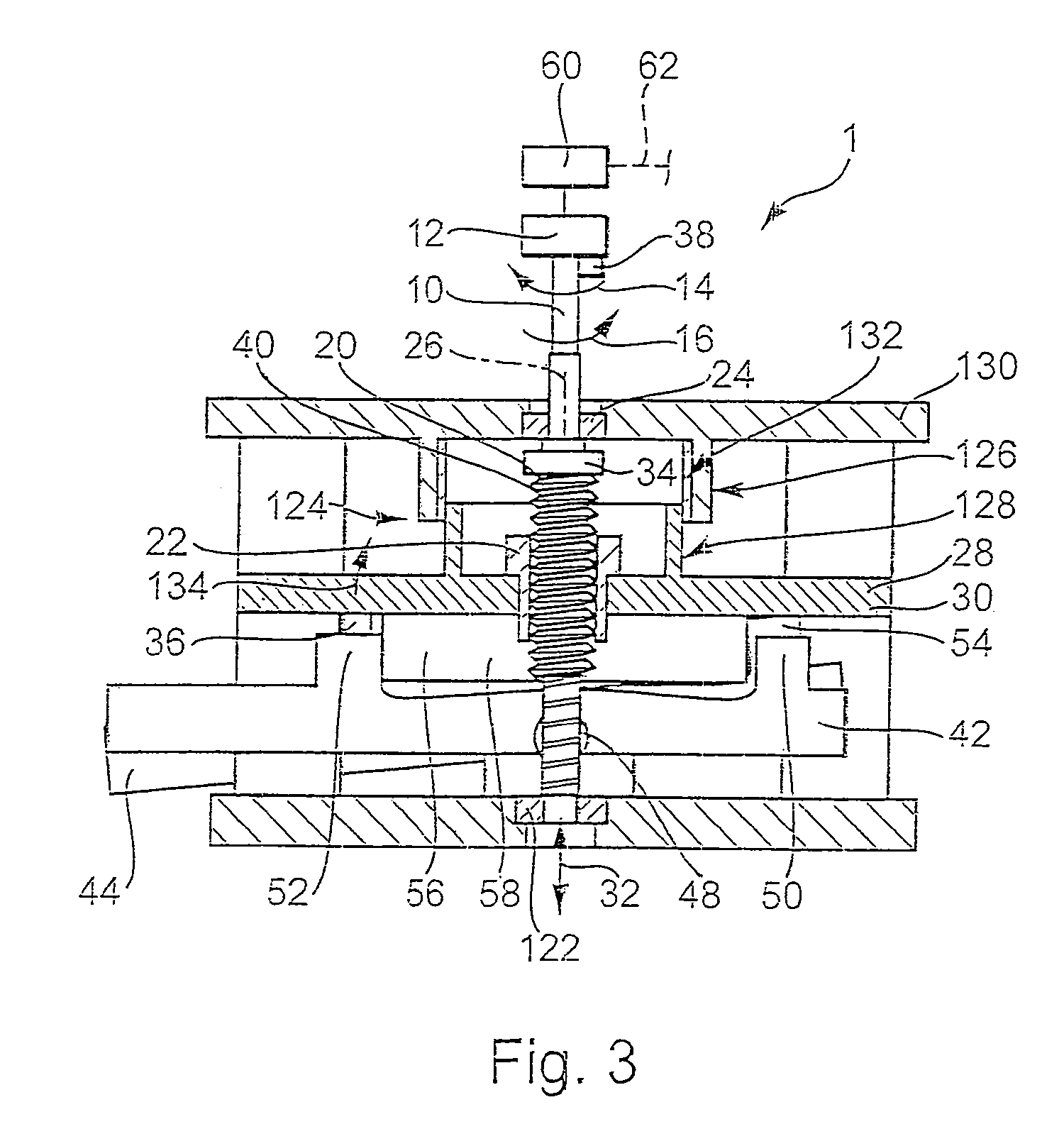Actuation device
a technology of actuating device and actuator, which is applied in the direction of mechanical equipment, mechanical energy handling, transportation and packaging, etc., to achieve the effects of low design effort, economic production, and operational reliability
- Summary
- Abstract
- Description
- Claims
- Application Information
AI Technical Summary
Benefits of technology
Problems solved by technology
Method used
Image
Examples
Embodiment Construction
[0076]FIG. 1 shows an exemplary actuating apparatus 1 according to the invention in diagrammatic illustration.
[0077]The actuating apparatus 1 shown in FIG. 1 may for example be an actuating apparatus by means of which gears may be changed in a motor vehicle transmission or by which the changing of gears may be controlled.
[0078]Actuating apparatus 1 has a rotatably mounted drive shaft 10 that in this case is motor output shaft 10 of a drive device designed as an electric motor 12. This drive or output shaft 10 may alternatively be turned via the electric motor 12 about its longitudinal axis in a first direction, which is diagrammatically indicated by arrow 14, or in a second rotational direction, which is diagrammatically indicated by arrow 16 and is opposite the first rotational direction. Electric motor 12 may accordingly be designed to be switchable so that the drive shaft can be driven—as desired—in both directions.
[0079]Actuating apparatus 1 has a nut / threaded spindle assembly 1...
PUM
 Login to View More
Login to View More Abstract
Description
Claims
Application Information
 Login to View More
Login to View More - R&D
- Intellectual Property
- Life Sciences
- Materials
- Tech Scout
- Unparalleled Data Quality
- Higher Quality Content
- 60% Fewer Hallucinations
Browse by: Latest US Patents, China's latest patents, Technical Efficacy Thesaurus, Application Domain, Technology Topic, Popular Technical Reports.
© 2025 PatSnap. All rights reserved.Legal|Privacy policy|Modern Slavery Act Transparency Statement|Sitemap|About US| Contact US: help@patsnap.com



